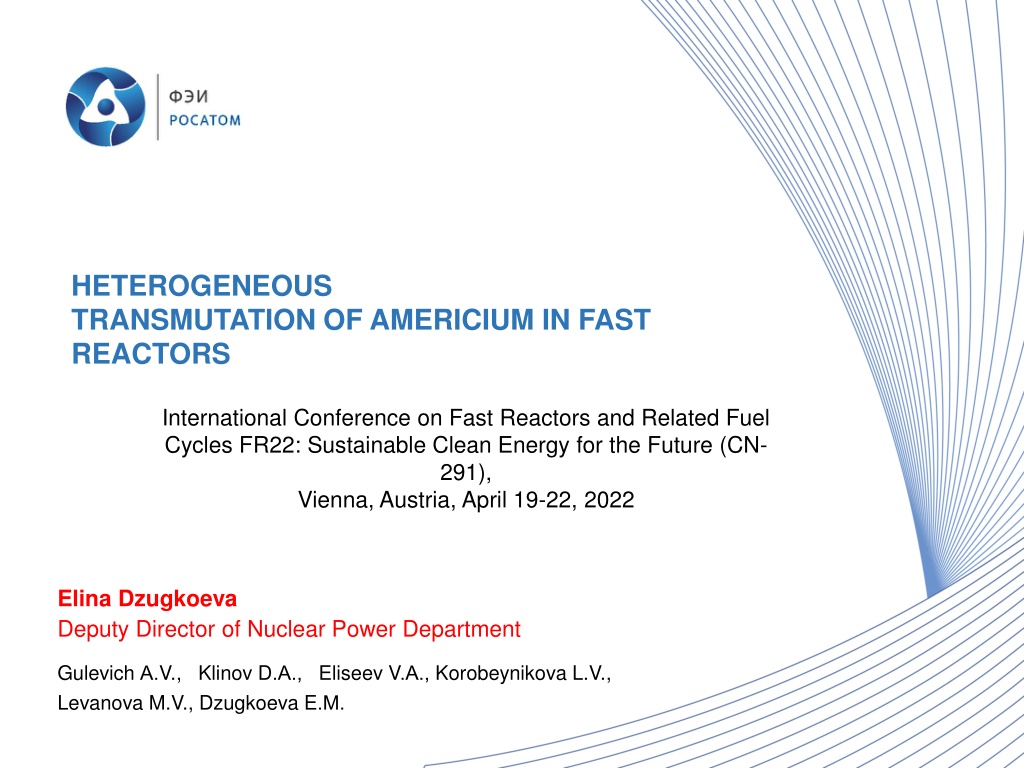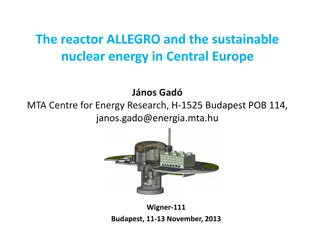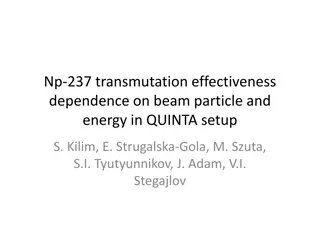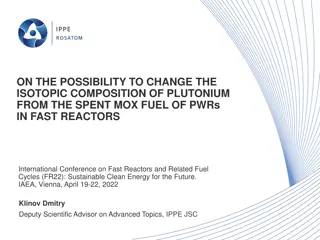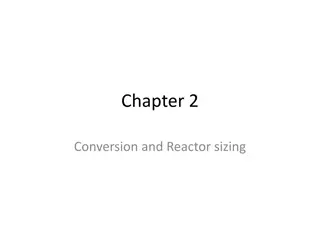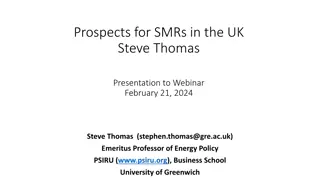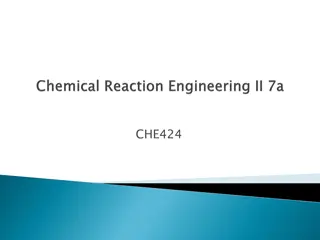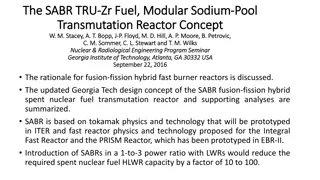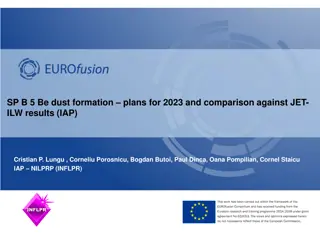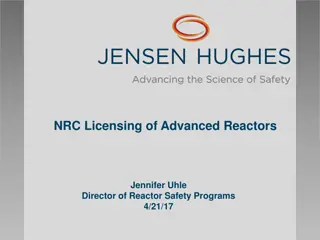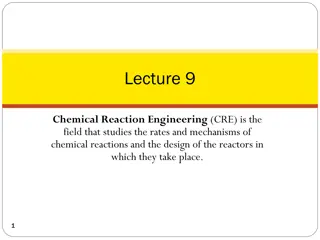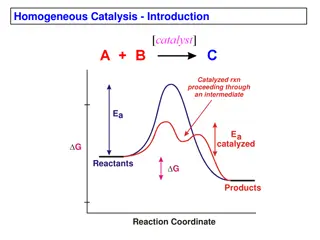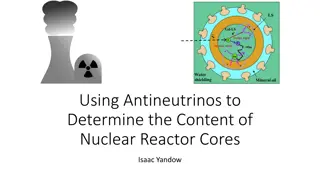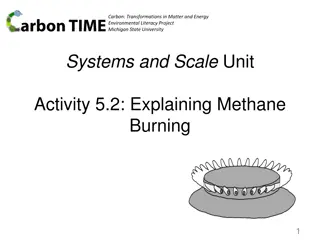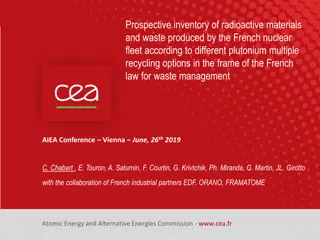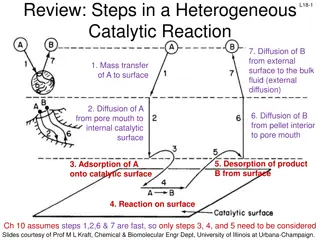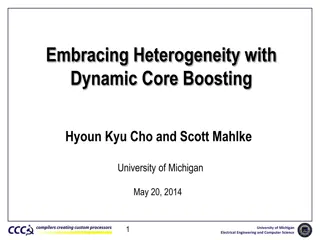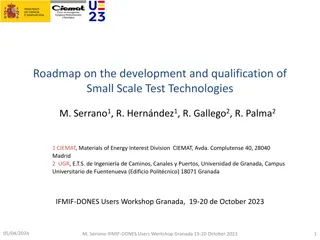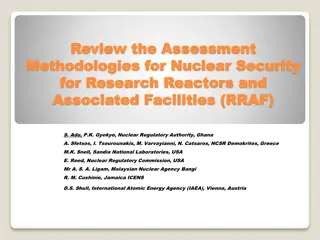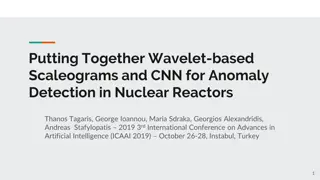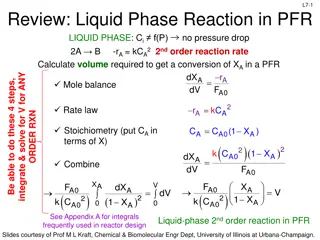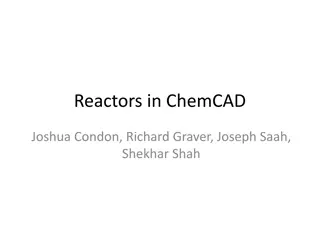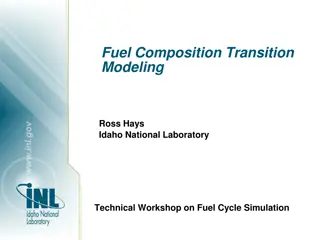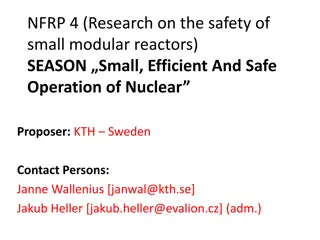Heterogeneous Transmutation of Americium in Fast Reactors: Burning for Sustainable Energy
Americium poses challenges in safe disposal due to its high radiation and volatility. However, through transmutation into other nuclides, such as 242Cm and 238Pu, it can be efficiently burned in fast reactors, offering a solution for clean energy production. Heterogeneous burning is preferred for its effectiveness in transmuting concentrated americium in separate fuel assemblies, ensuring safety and utilization of nuclear fuel resources.
Download Presentation

Please find below an Image/Link to download the presentation.
The content on the website is provided AS IS for your information and personal use only. It may not be sold, licensed, or shared on other websites without obtaining consent from the author. Download presentation by click this link. If you encounter any issues during the download, it is possible that the publisher has removed the file from their server.
E N D
Presentation Transcript
HETEROGENEOUS TRANSMUTATION OF AMERICIUM IN FAST REACTORS International Conference on Fast Reactors and Related Fuel Cycles FR22: Sustainable Clean Energy for the Future (CN- 291), Vienna, Austria, April 19-22, 2022 Elina Dzugkoeva Deputy Director of Nuclear Power Department Gulevich .V., Klinov D. ., Eliseev V. ., Korobeynikova L.V., Levanova M.V., Dzugkoeva E. .
What is americium? - Why burn it? - No way to guarantee safe disposal of Am for thousands of years. Am is the most dangerous minor actinide (strong gamma radiation, heat release (115 W/kg), volatility). It complicates the technology of fuel fabrication. It influences the safety-relevant effects and reactivity coefficients. Am from SNF of thermal reactors is represented by two isotopes - 241Am and 243Am. The first is formed during the decay of the 241Pu, the second - by capture of a neutron in 242Pu. These are even isotopes, they undergo fission weakly in fast reactors with MOX fuel. Small amounts of Am (not exceeding 5%) have no influence on the reactor safety parameters. 2
What is americium? Burning of Am is possible due to its transmutation into other nuclides Example: After neutron capture, 241Am turns into 242Am (or 242mAm), which turns into 242Cm, and then - into 238Pu, which fissions in a fast reactor as efficiently as 235U. 242mAm fissions actively in any neutron spectrum. Americium and the products of its transmutation are distinguished by high heat release: 238Pu 570 W/kg; 241Am - 115 W/kg; 242Cm 120 kW/kg; 244Cm 2.8 kW/kg. Transmutation of 241Am leads to the formation of 242Cm with very high heat release. Therefore, the duration of spent fuel storage in the in-reactor storage should be sufficient for its decay (at least 2 years). 3
Why is heterogeneous burning preferable? Heterogeneous transmutation of americium (in separate fuel elements or assemblies) is considered preferable because: - the higher the concentration of americium, the more effectively it is transmuted; - for effective transmutation, americium should be concentrated in a small number of assemblies; - "clean" fuel is manufactured at the existing facilities, whereas americium specialized facilities be built. requires that Assemblies with Am Fig.1 Location of assemblies with Am in the "clean" fuel, americium is formed from higher isotopes of However: plutonium, therefore, the total effectiveness of homogeneous transmutation in fuel and heterogeneous transmutation in burner assemblies is close. 4
Complexity of heterogeneous burning - is established in the reactor, which depends on the isotopic composition of Pu; Since Am in a fast reactor not only transmutes, but is also formed, its equilibrium content - than the equilibrium content (~1% h.at.); Transmutation of external americium is possible when its content in the fuel is higher - Am is formed in the fuel when FAs are held in different storage facilities, etc.; - release of the fuel assemblies. The concentration of Am and products of its transmutation in a small number of assemblies leads to increased residual heat release. Handling of spent fuel assemblies becomes impossible. The loading and unloading paths of the reactor have design limitations on the heat - equilibrium content of Am. Today s project of a commercial fast reactor makes it possible to unload spent FAs with - (especially, for heterogeneous burning). French specialists designed the unloading path of FAs with the permissible heat release of 5.5 kW for the ASTRID reactor. Forced cooling is required in the loading and unloading paths of FAs for burning of Am - 4-5 kW, respectively, is being considered for a commercial fast reactor. A possible increase in the permissible heat release of fresh and unloaded FAs to 1 and 5
An alternative method for heterogeneous burning of americium Am is burnt in the 1strow of the blanket with a strong moderator (metal hydride). For this purpose, Am and the moderator are placed in irradiation devices (ID). The moderator is placed inside the ID and americium oxide outside it, in order to protect the core from thermal neutrons. The depth of transmutation in such devices depends on theamount of loaded Am. If we load 2.7 kg of americium into one ID, the transmutation fraction will be 93%. Americium Only 7% of the initially loaded americium will remain, and two thirds of its amount will turn into fission products. The annual volume of transmutation will be 26 kg. Moderator Fig.2 Diagram of ID An increase in americium loading to 5.4 kg in one ID will increase the volume of transmutation to ~ 50 kg per year. In this case, 11% of the initially loaded Am will remain in the IDs, and its burnup will decrease to 46%. In parallel, ~36 kg of Am per year is formed in the clean fuel. This method does not require changes in the paths of fresh and unloaded fuel in a commercial fast reactor. 6
Thank you for attention Elina Dzugkoeva E-mail: emdzugkoeva@ippe.ru 2022
